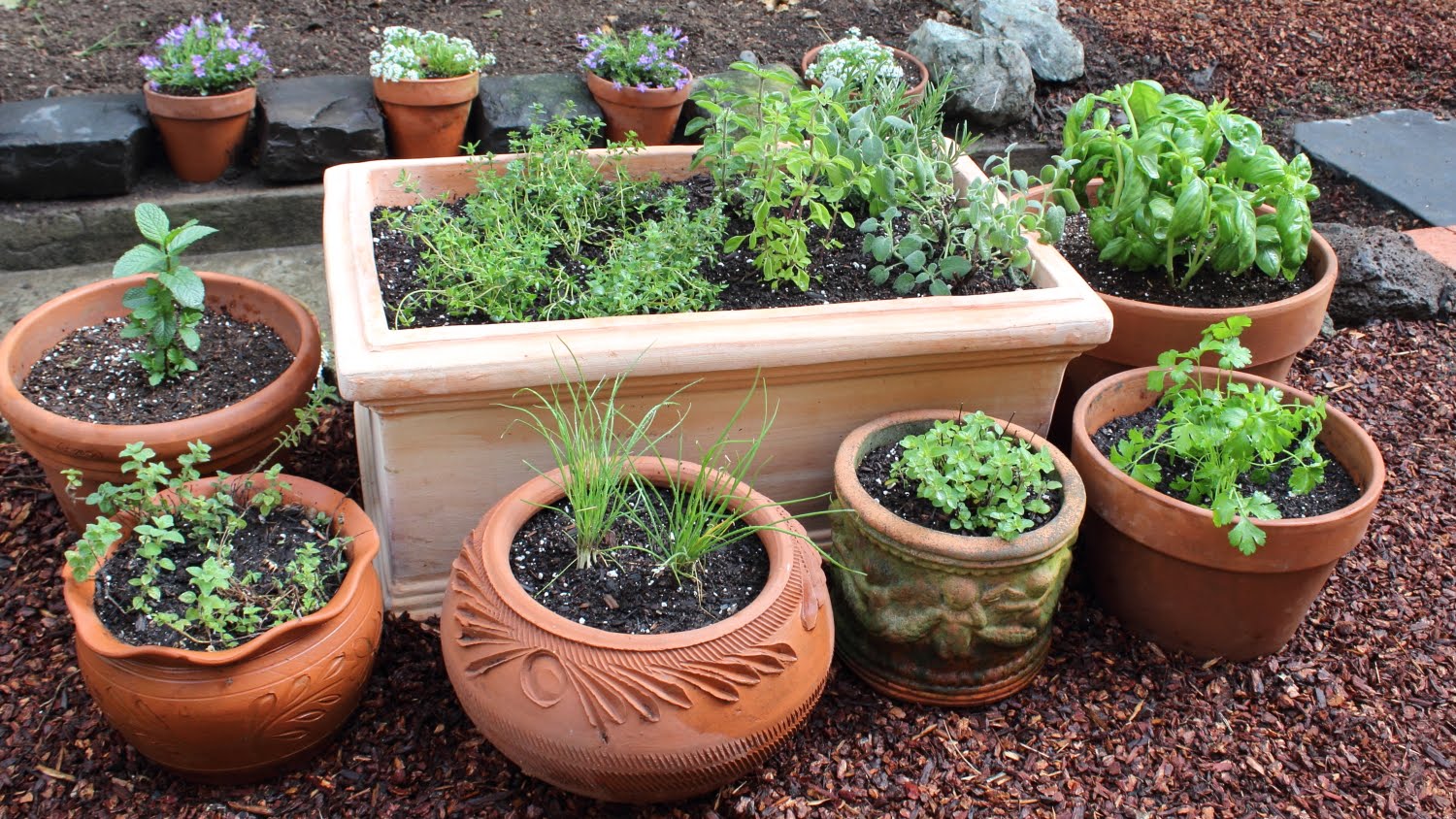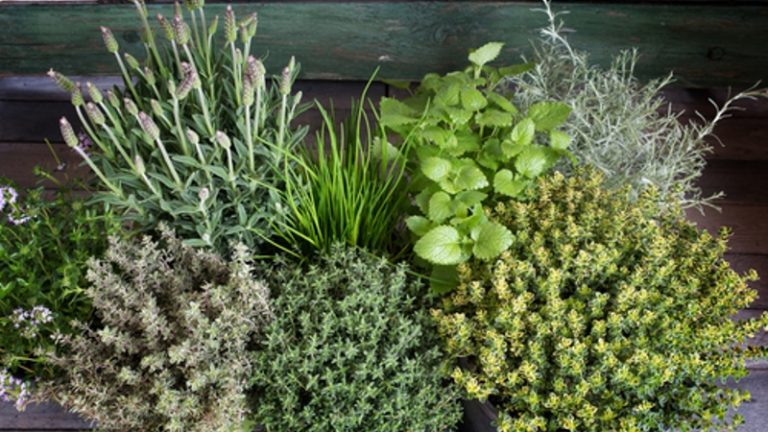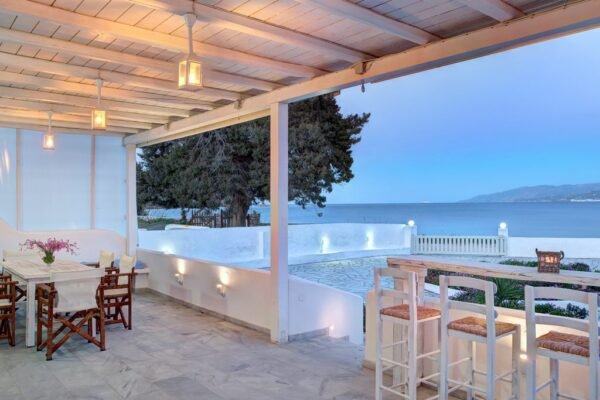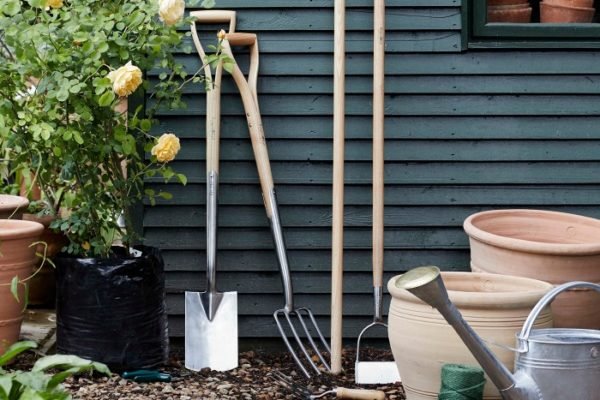Growing a herb garden isn’t a hobby like casino online gaming. It involves work, trial and error and a combination of success and failure. But once you get the hang of growing an herb garden you’ll reap the benefits in fresh, delicious and healthy herbs that can spice up any meal.
Herbs are easy to grow. Some need more sunshine while others require less. Some herbs are water guzzlers and others survive nicely on a bit of a sprinkle every other day. It’s easy to grow herbs. All you need is some good soil and garden space or, if you don’t have a garden, a few window pots. You’ll need to plan out your herb garden because some plants can grow quite large while others don’t do well when shaded. But growing herbs is cost-efficient and provides a lot of satisfaction.
Getting Started

Start out by choosing the space for your herbs. Window pots are satisfactory (if you use window pots, make sure that they have plenty of good drainage) but the ground is best. Most herbs enjoy sun and as long as the temperatures don’t get too hot (above 90) the sunny garden area will give your herbs the space that they need to spread.
If you’re in a place where the summers are hot, consider a spot where the plants will get the morning sun and then, in the afternoon, some filtered (under trees, for instance) light. You want to make sure that the plants get at least 4 hours of direct sunlight.
Planting Herbs

When you’re ready to plant, try to plan for 1 to 4 feet in diameter for each plant. Plant needs differ – sage, mints, oregano, marjoram and rosemary need the most space while cilantro, dill, parsley and chives need only 1 foot in diameter. Thyme, tarragon, savory and basils need a medium amount of space – 2 feet in diameter should be enough To prepare the soil you’ll need to loosen the dirt so that the water can drain and give the plant roots space to dig into the soil. Add compost to the soil – about an inch or so on top is fine. Mix it into the soil to fertilize and help prevent drainage problems.
Now you can plant your herb plants. If you are starting from seeds, the seeds should have already started to sprout so you can plant the small plants into the soil. If you’re starting with small plants you should plant them into the soil with a bit of the soil that they’ve been sitting in still clinging to the roots.
Water them whenever you see that the soil is getting too dry. You don’t want to overwater them because if the roots siit in over-watered soil they will rot and the plant will suffer. However, you don’t want them to get dry because they will dry out relatively quickly.
In addition, different types of herbs require different watering schedules. Plan your garden in a way that will have the high-watering herbs located together and the low-watering herbs in another section.
Harvesting

For most herbs, when you see that the plant is producing leaves, you will need to cut off about 1/3 of the plant, cutting close to a leaf intersection so your plants can regrow and new leaves can emerge. There are some exceptions. Parsley, for instance, grows its new leaves from the center of the plant so you’ll need to completely remove the old leaves so the new tiny branches can grow from the center.
In this case the oldest branches need to be completely removed, leaving the new tiny branches growing from the center. You’ll learn more about how to harvest each individual herbs as your plants grow and mature.
Window Pots

To grow herbs in window pots you will need is a sunny, warm place and containers that are large enough for your plants to grow. For many gardeners, window pots are the only option but there’s no reason that you can’t grow herbs as healthy and robust in a window pot as you can in a garden plot. Make sure that the pots are filled at least 3/4ths full of soil.
The plants won’t grow as tall or as wide in a window pot as they will in a garden area where they have a lot of room but you can still grow and harvest enough herbs to season your food well. Allow for at least 8″ in diameter for each plant – you can transplant the herbs to larger pots later if you want.
Tips
Here are some tips from gardening experts:
- Parsley can sprout more rapidly if you soften the seeds first. Soak them overnight in warm water before you plant them.
- Plan to restart thyme plants every 2-3 years. The older the plant, the poorer the quality for cooking and other uses.
- The more often you harvest any of the mints, the more it will grow. Grow it in a container or it will take over your garden.
- Make sure that your plants get a lot of light. The more light the plant gets, the more flavorful the herbs that result. .
- Herbs like sage and dill self sow if the flowers are not removed.
- You can never over-water mints. Soil should be moist at all times (but not soggy) .
- Mulch around the herbs to discourage weeds and maintain the moisture level of the soil’s moist level
- If you add compost to the upper surface of the soil in the spring it should take you through the year.
- Herbs are the most flavorful right before they flower.
We hope we’ve started you on your way to successful and pleasant herb gardening hobby.








